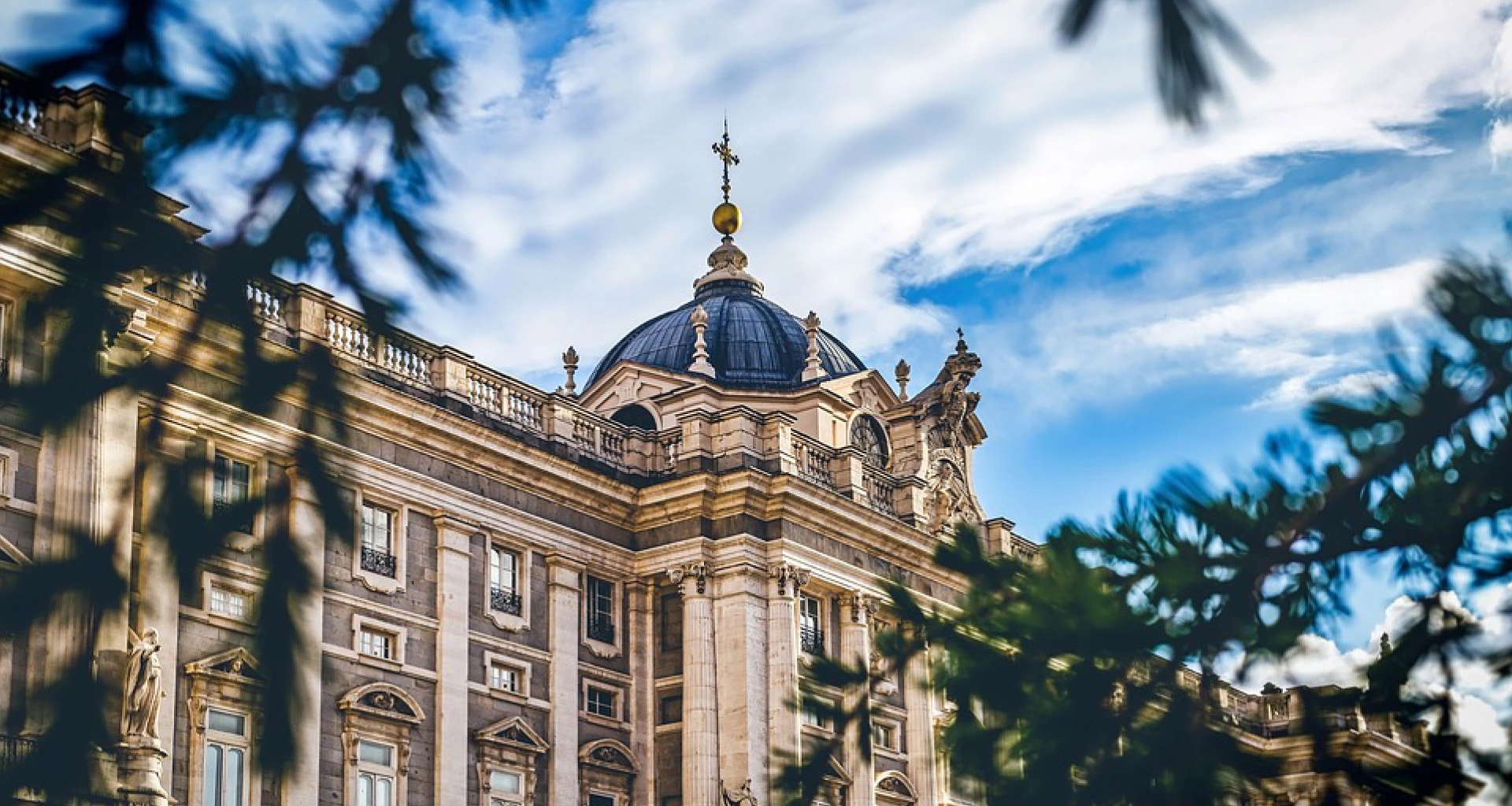
The 5 essential rooms to see on your visit to the Palacio Real of Madrid
Did you know that the Royal Palace of Madrid is the largest palace in Western Europe? It covers a total of 135,000 m², nearly twice the size of Buckingham Palace or the Palace of Versailles. That is why it houses a total of 3,418 rooms. If you don't have time to see them all, don't worry. We've prepared a selection of the five rooms you absolutely cannot miss.
The Gasparini Chamber of the Royal Palace of Madrid
The Gasparini Chamber is one of the most beautiful rooms, and is usually the favorite of all those who take our guided tours of the Royal Palace of Madrid. It was the place where the king would dress in the presence of the court, as per the customs of the time. The room is named after its designer, Matías Gasparini, who took nearly 50 years to complete its decoration.
Its style ranges from chinoiserie to rococo, with furniture, marble flooring, and wall tapestries designed as a cohesive ensemble. Almost all its decoration and furniture are original from that period, except for the silk wall coverings, which had to be recently replaced due to deterioration.
A highlight of this room is one of the clocks made by Pierre Jaquet-Droz for the court. It is placed above the room’s fireplace and features automaton figures dressed in 18th-century fashion, dancing to the sound of a shepherd's flute when the clock strikes the hour.
The Throne Room of the Royal Palace
As its name suggests, the Throne Room houses the royal thrones. It is the only room in the Royal Palace that has never changed its function since its conception in 1737, and all its decorations are original from that time.
One of the main highlights is the spectacular ceiling vault, designed by Roberto Michel, considered the most beautiful in the entire palace. The grand fresco is one of the last works of the artist Giambattista Tiepolo and represents the splendor of the Spanish monarchy.
The rest of the decoration is the work of Battista Natali, who designed all the embroidery in the room. Natali’s decorations, combined with Tiepolo’s paintings, make this room one of the greatest achievements of Rococo art in Spain.
Additionally, the room features sculptures that were mostly salvaged from the old Alcázar. Among them are a series of bronze figures known as "The Planets" by Jacques Jonghelinck, the statues of "The Cardinal Virtues" by René Fremín, and the bronze lions surrounding the royal throne, sculpted by Lucca and brought from Italy alongside "The Planets" by the painter Velázquez.
The Royal Chapel of the Royal Palace of Madrid
The Royal Chapel was built between 1750 and 1759 by Ventura Rodríguez under the orders of King Ferdinand VI. It has a classical layout and is accessed through the gallery surrounding the central courtyard.
Its decoration was carried out by the painter Corrado Giaquinto, who painted the chapel’s frescoes and atrium. The organ, built in 1778 by Jordi Bosch i Bernat, is considered a masterpiece. The works of artists Ramón Bayeu and Mengs are also noteworthy.
Recently, this room has been used by the royal family for funerals, such as those of Juan de Borbón and María de las Mercedes de Borbón. In November 2000, a ceremony was also held here to commemorate the 25th anniversary of Juan Carlos I’s proclamation as King of Spain.
The Room of the Infante don Luis of the Royal Palace
Although this room has been sporadically occupied throughout its history, it houses some of the most interesting pieces of the Royal Palace of Madrid. It is named after Infante Luis Antonio de Borbón, who resided here between 1764 and 1776.
In the first antechamber, known as the China Cabinet, you cannot miss the fresco by Luis González Velázquez, as well as the china used for the service of the Princes of Asturias, various Sévres porcelain pieces, and the crystalware of King Francisco de Asís, crafted at the Royal Glass Factory of La Granja.
Next, we find the Infante’s Chamber—where he used to hold musical performances, now serving as an instrument room—and the Painted Paper Room, decorated with wallpaper from the Royal Factory.
The visit concludes with the Angle Cabinet or Chinoiserie Dressing Room, which, along with the Infanta Mariana Victoria's Room and the Bird Room, houses the palace’s largest painting collection. Here, you can admire works by Juan de Flandes, Van der Weyden, Bosch, Rubens, and Caravaggio.
The Royal Armory of the Royal Palace of Madrid
Finally, no guided tour of the Royal Palace of Madrid would be complete without visiting the Royal Armory, one of the best in the world, alongside the Imperial Armory of Vienna. Although part of the collection was lost during the War of Independence and the Civil War, some of the most significant weapons and pieces in the world have been preserved.
Be sure to see the tournament armor of Charles V and Philip II, crafted by the finest master armorers of Milan and Augsburg. Among these, the most notable is the full suit of armor worn by Emperor Charles V at the Battle of Mühlberg, famously depicted in Titian’s equestrian portrait, now housed in the Prado Museum.